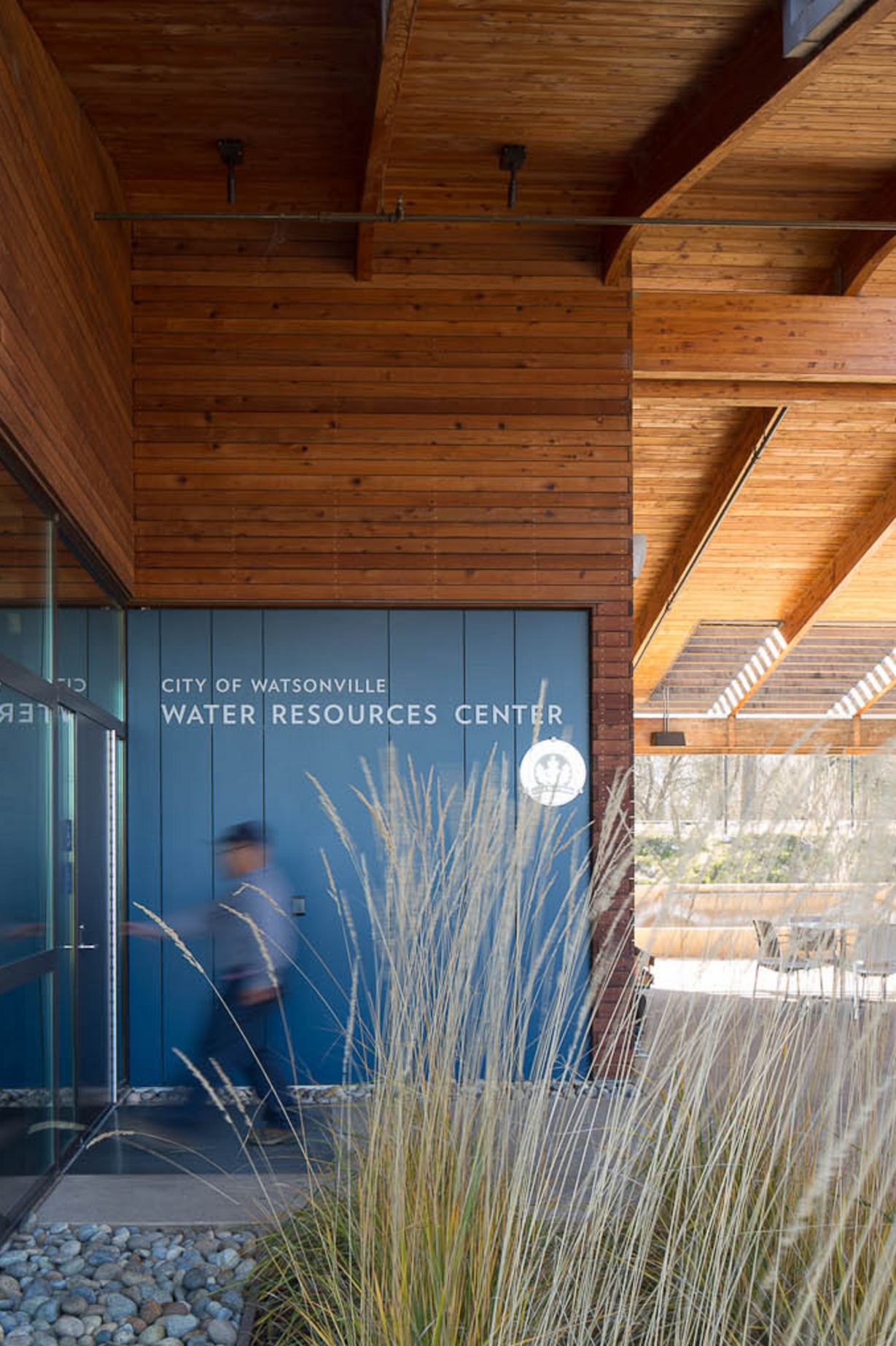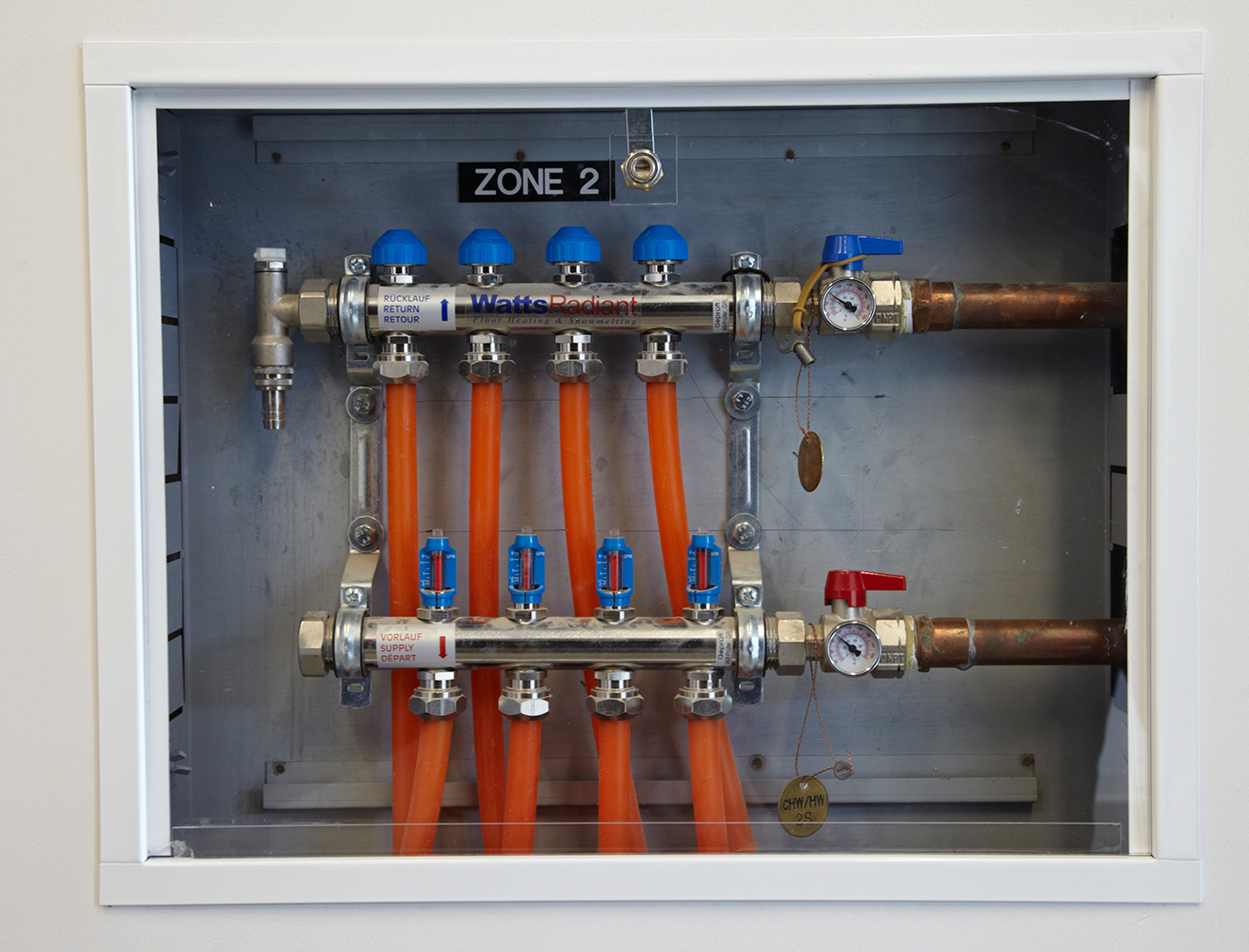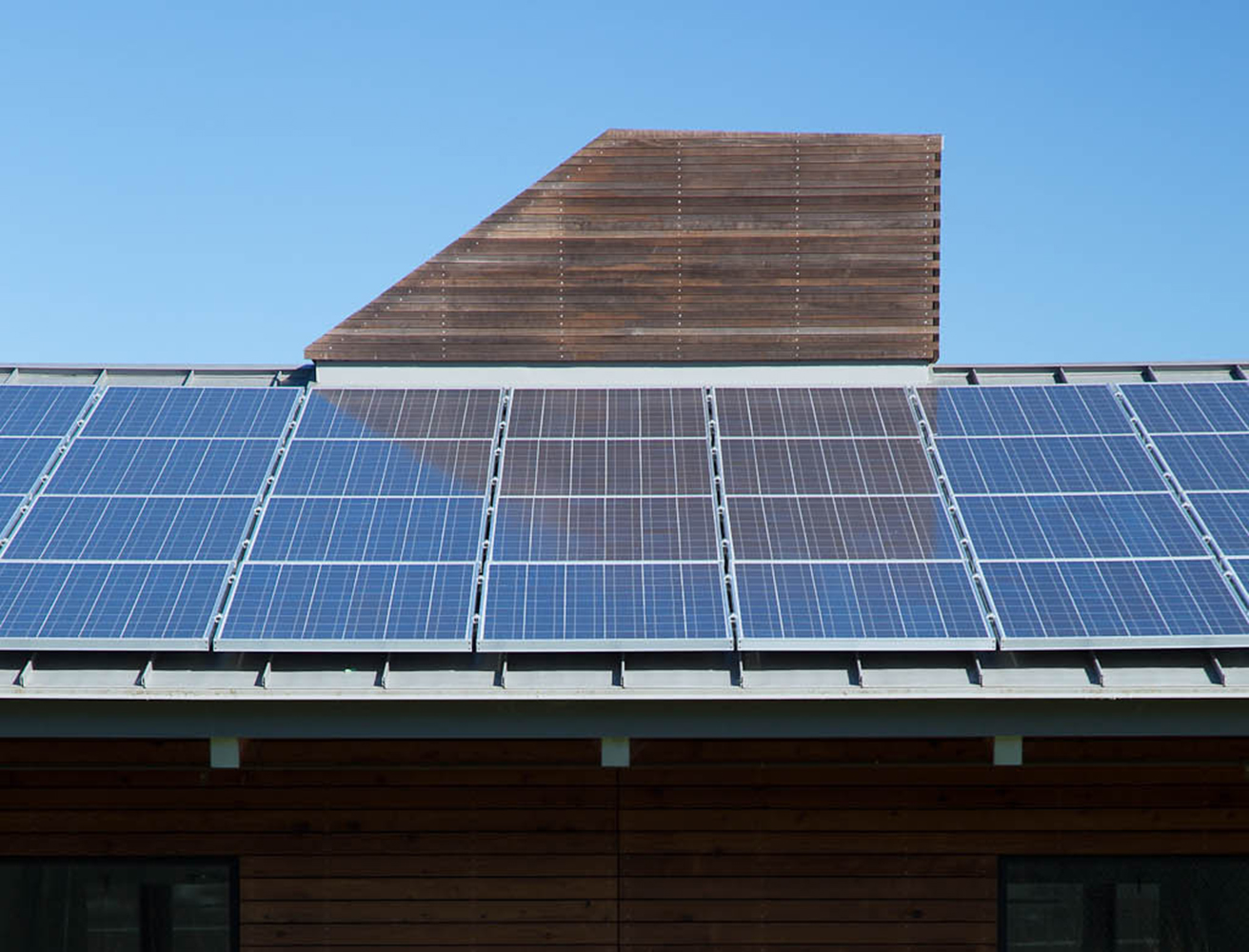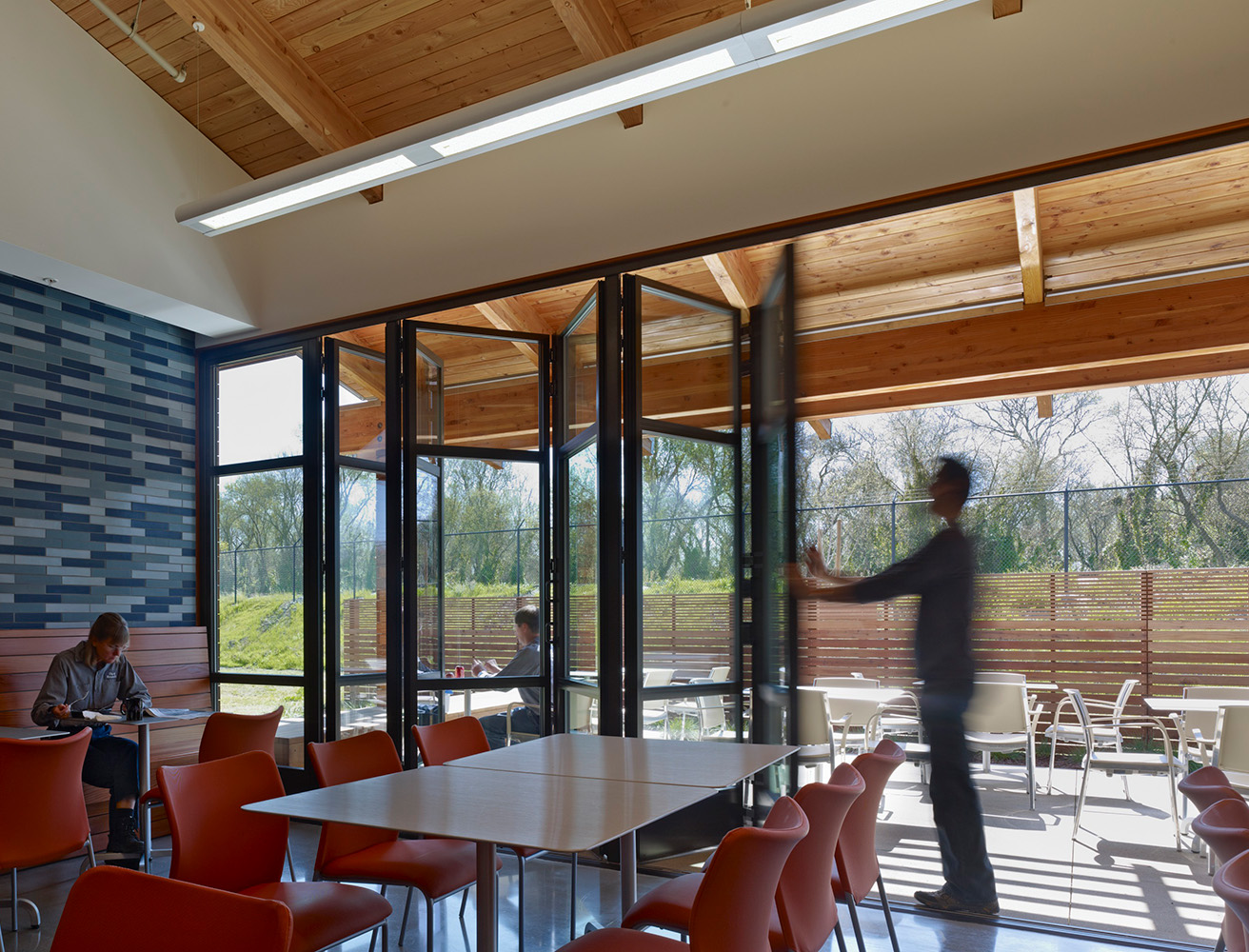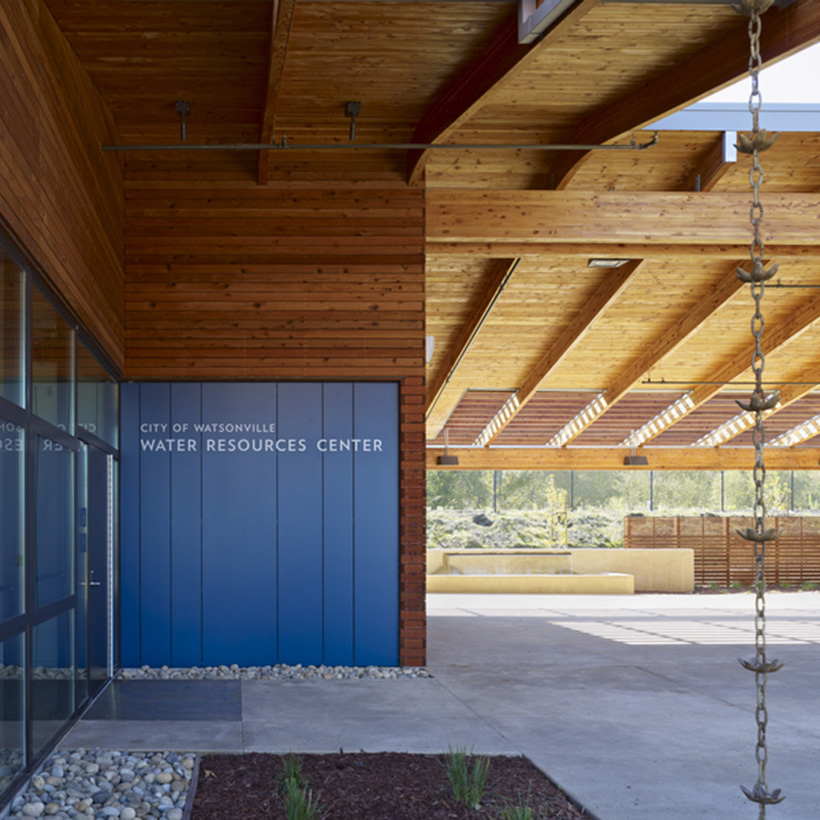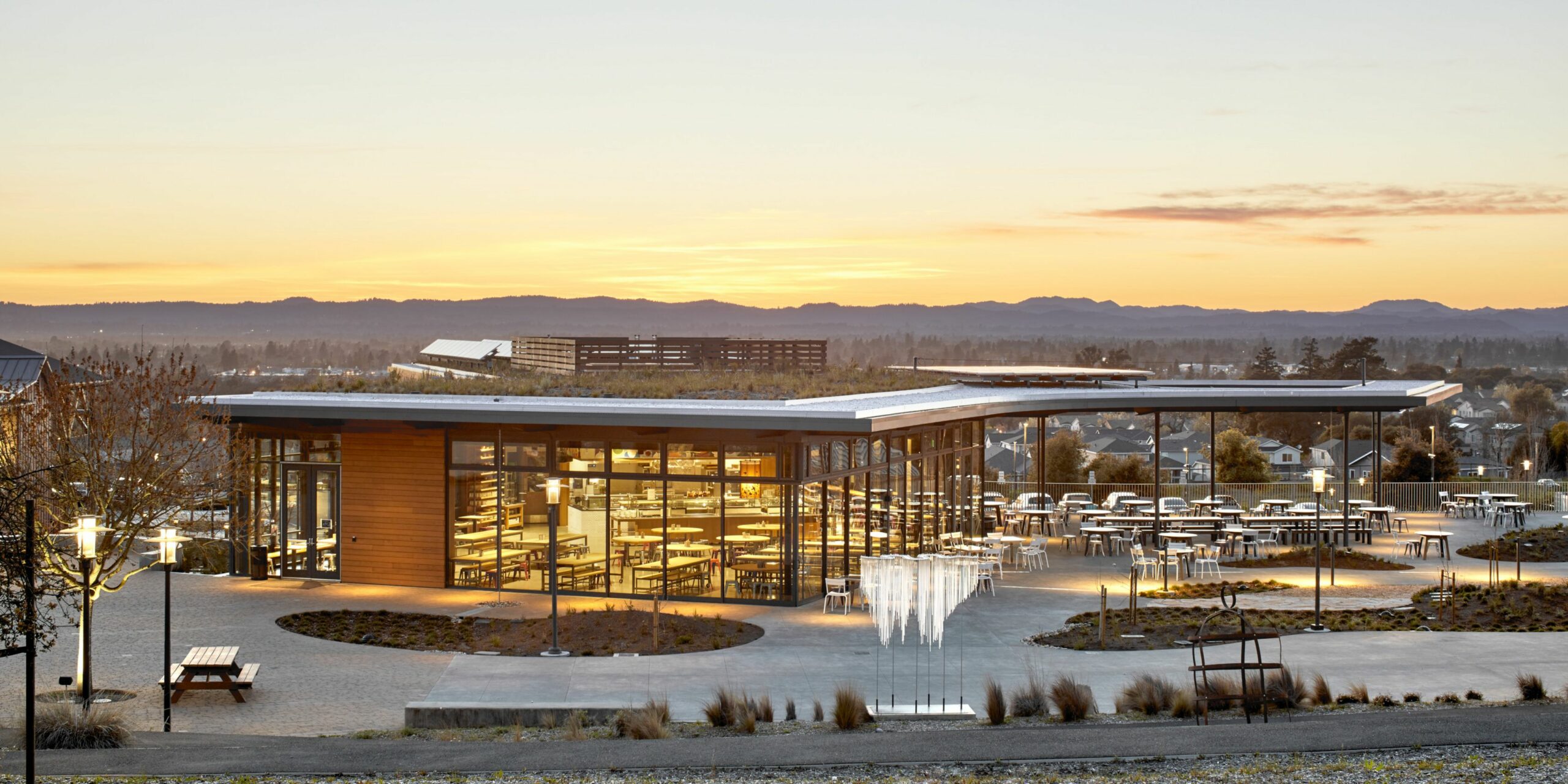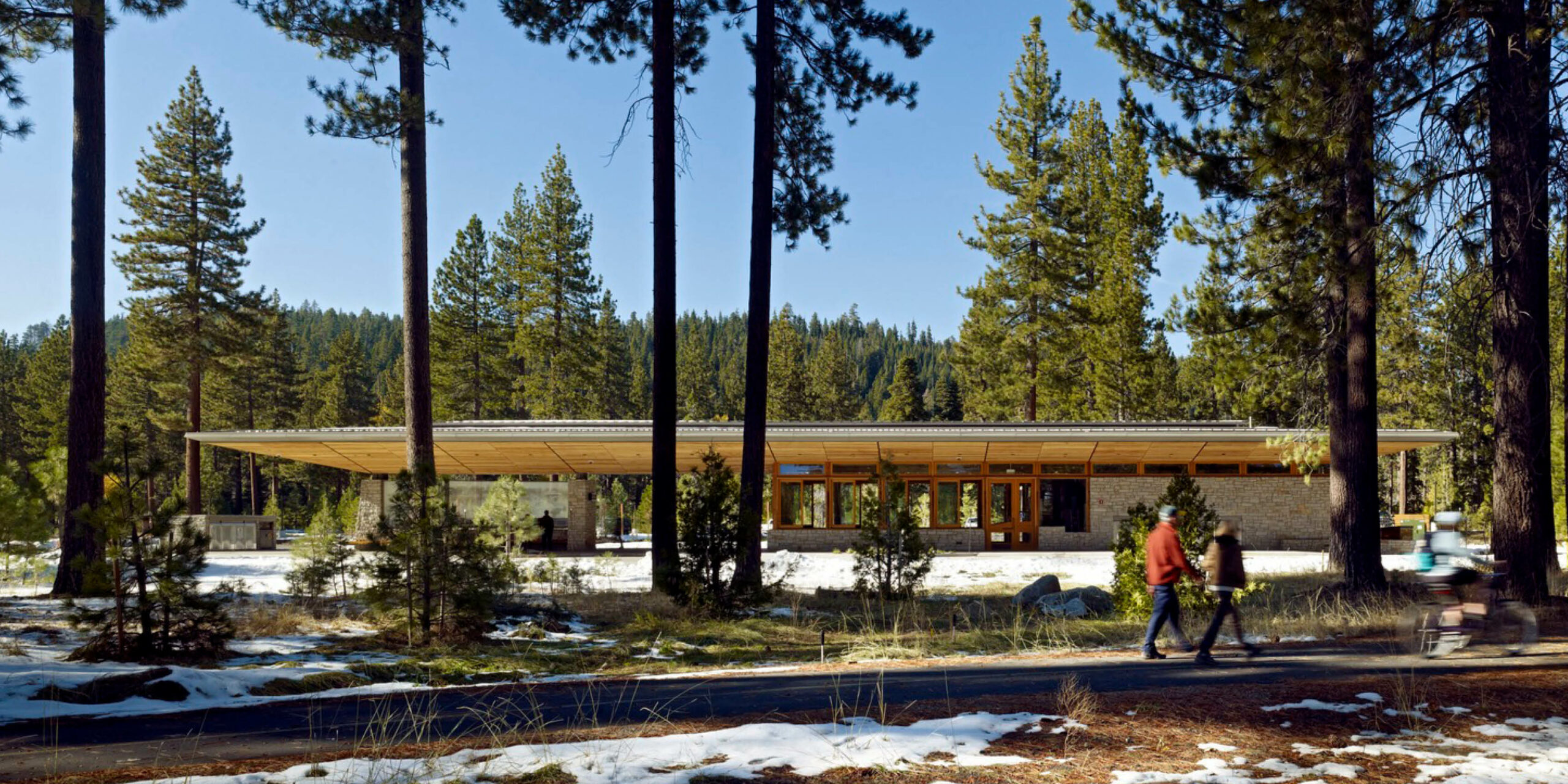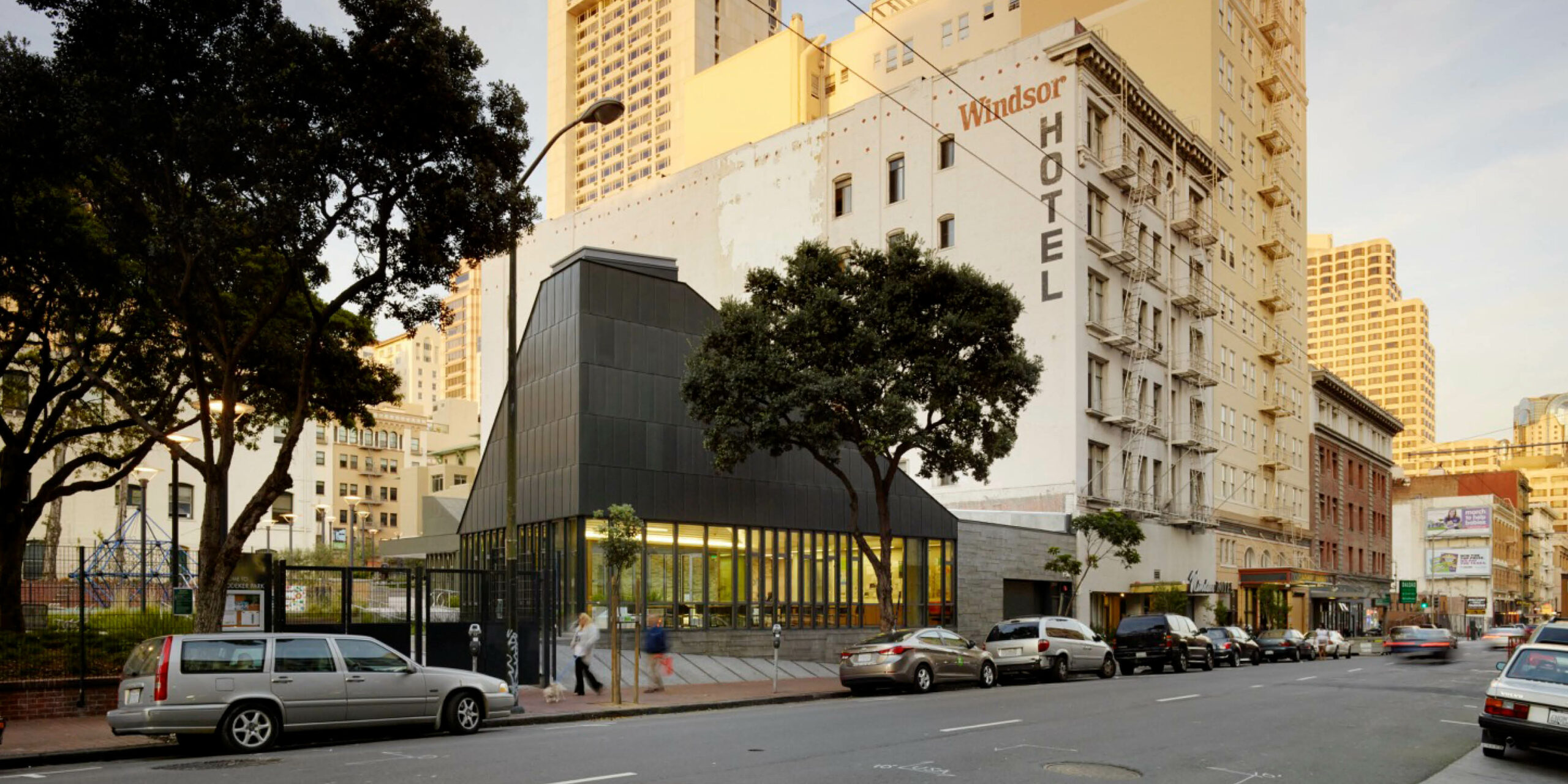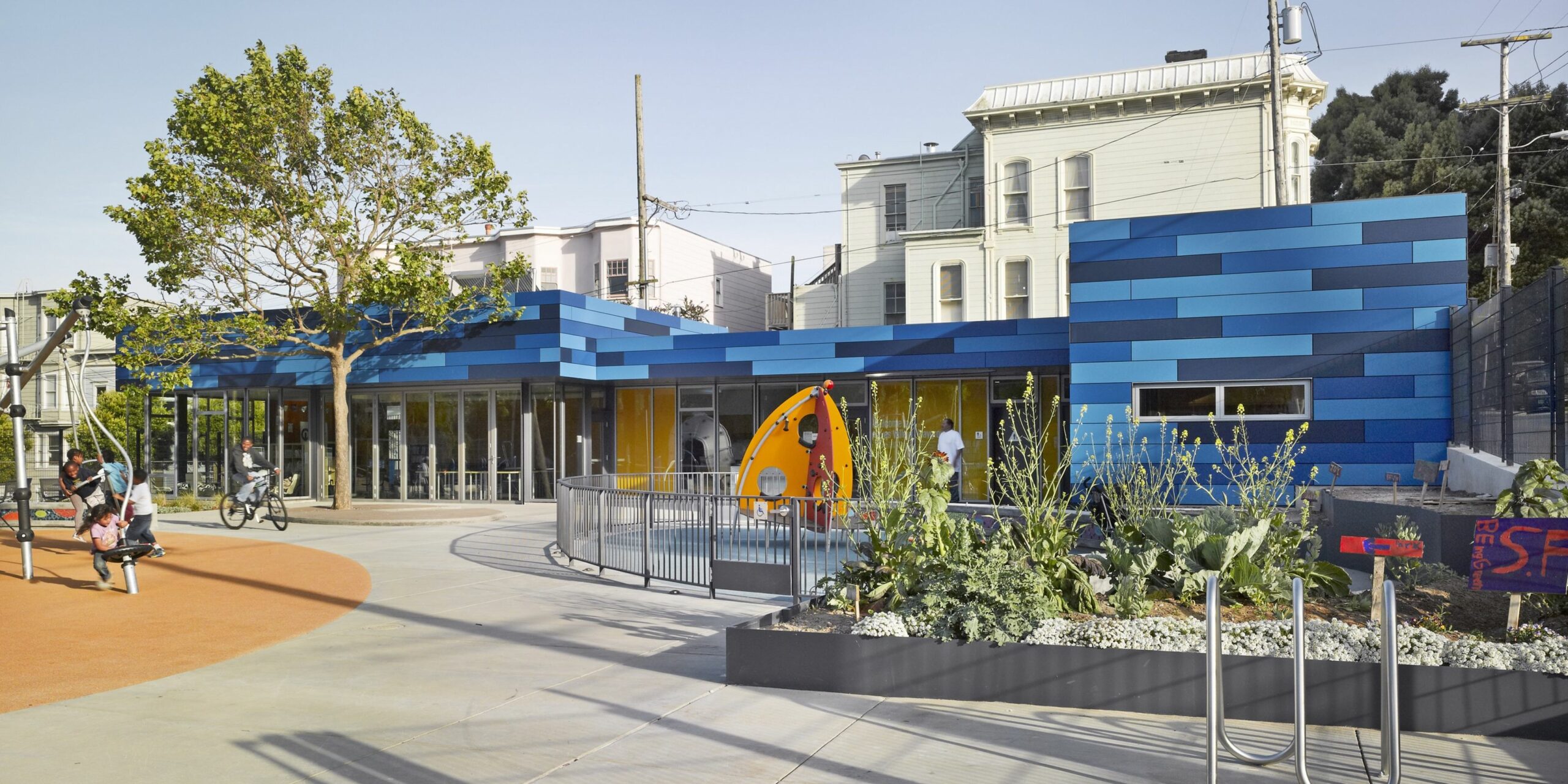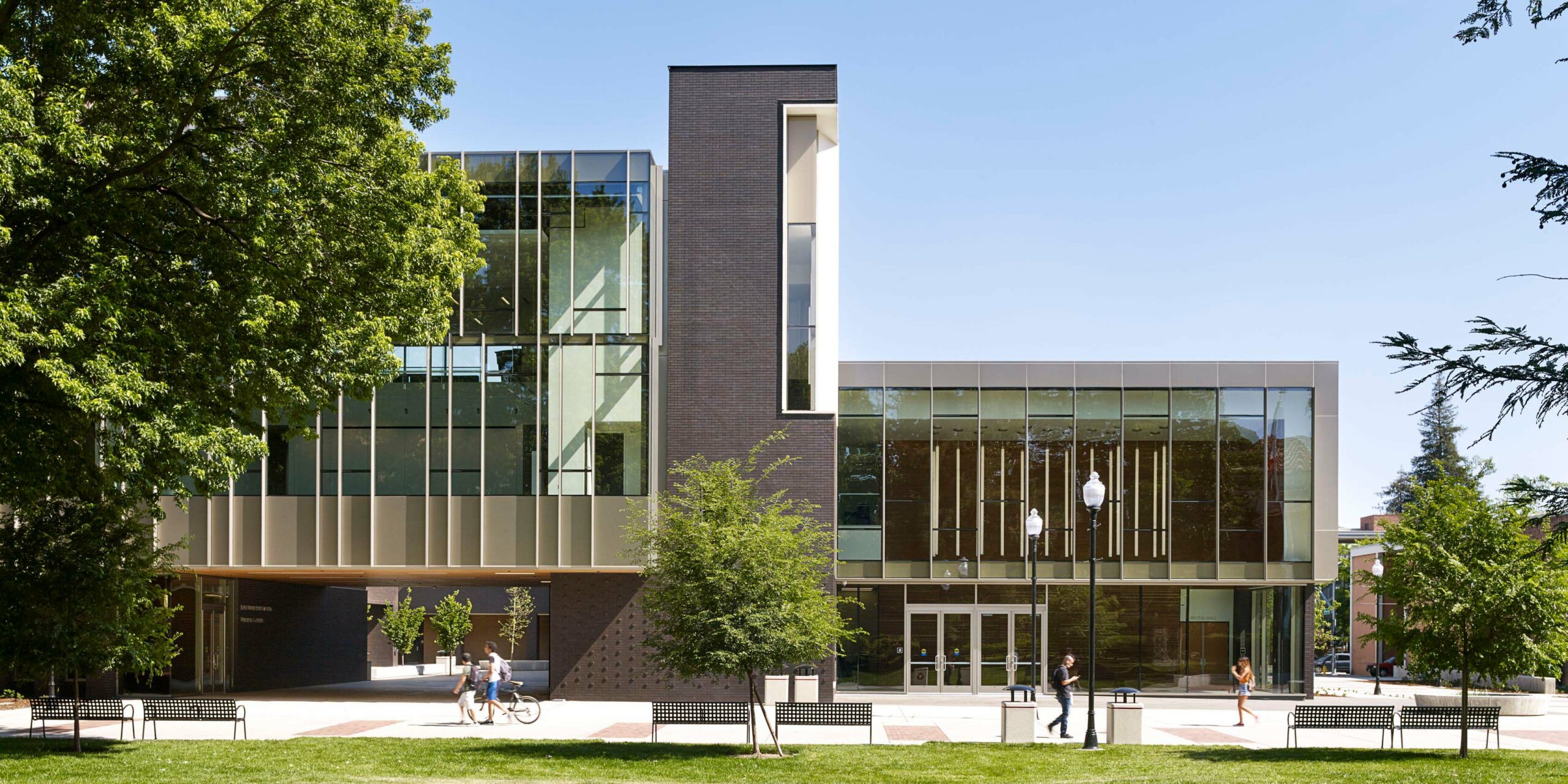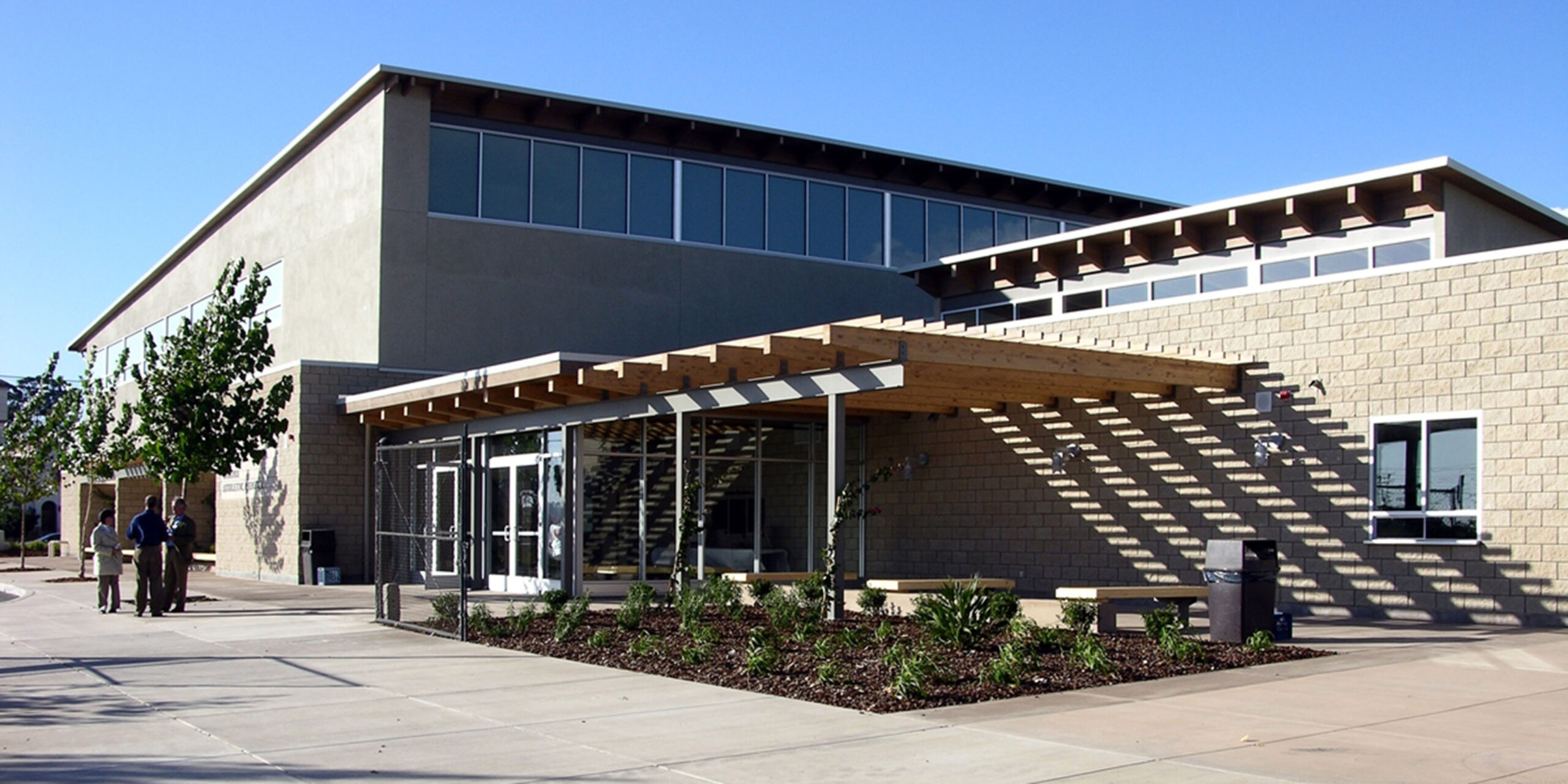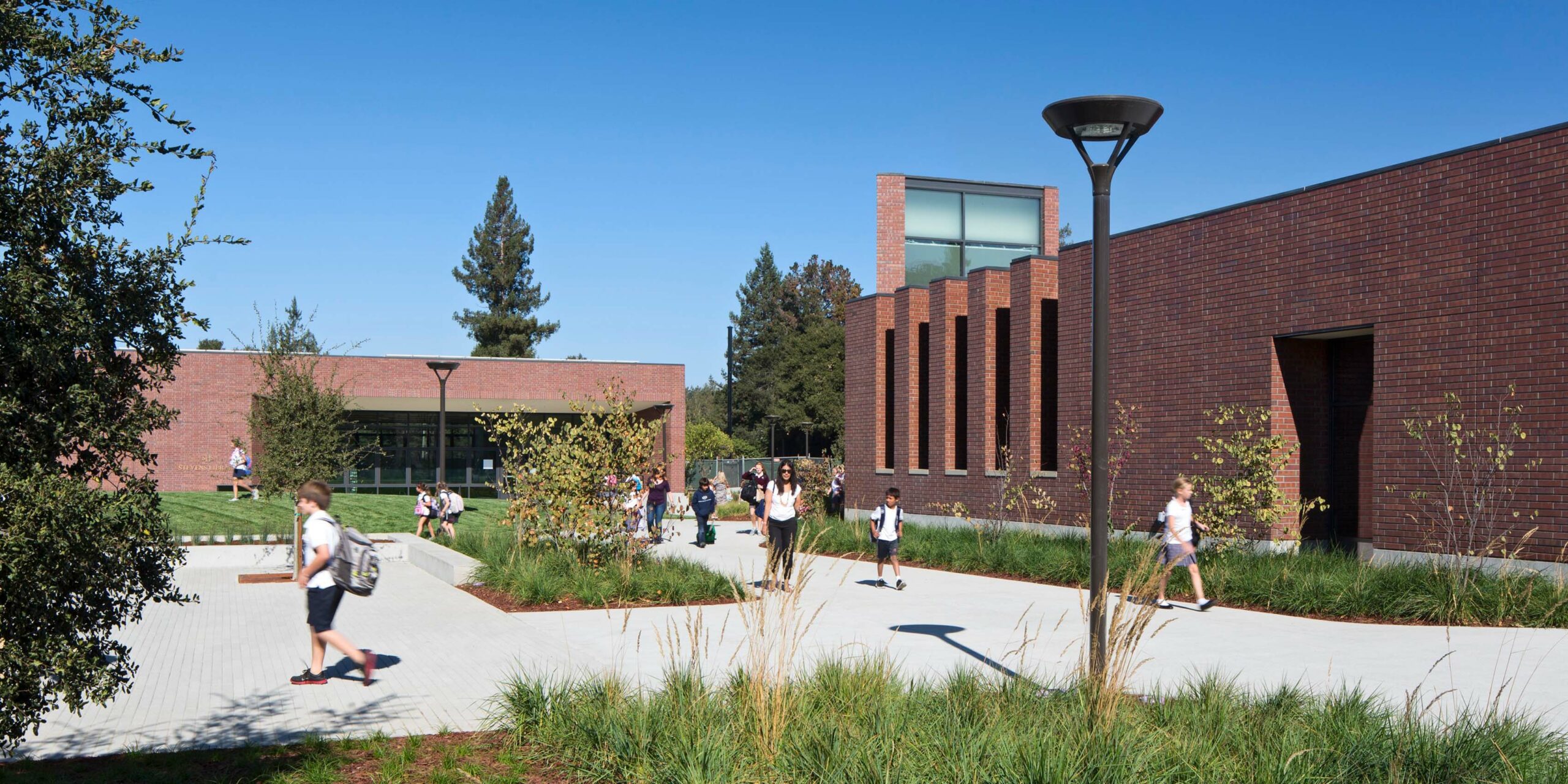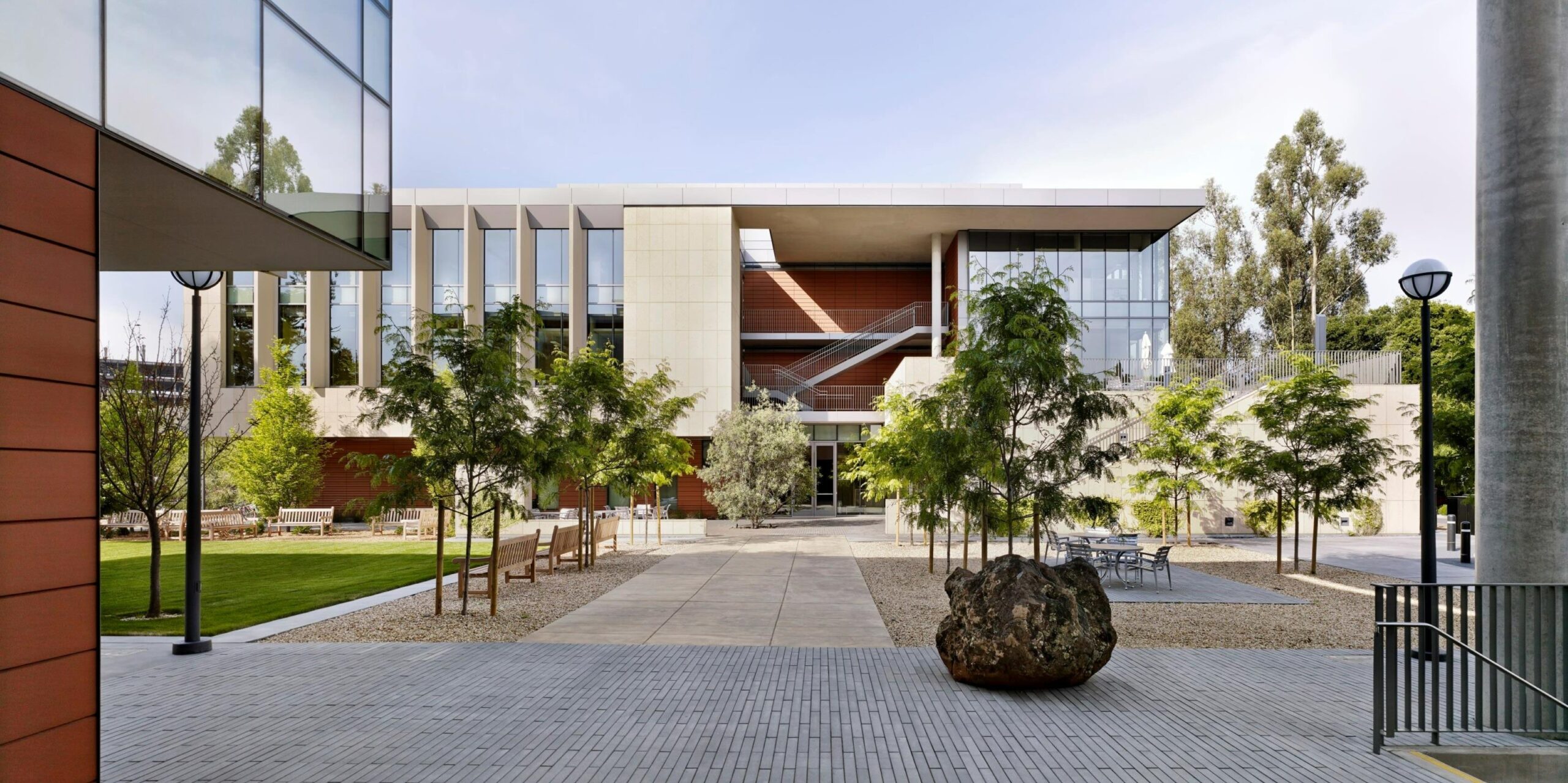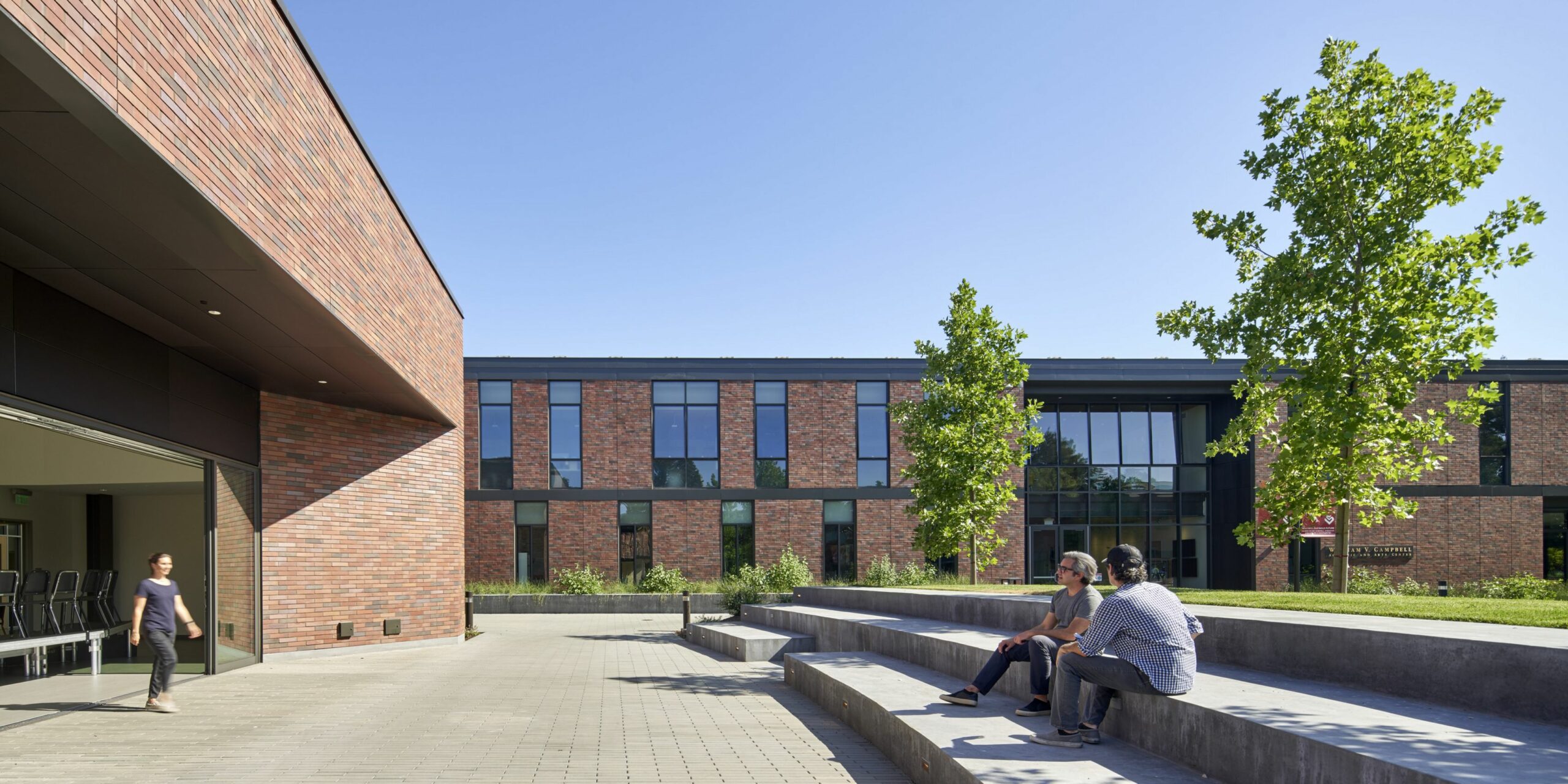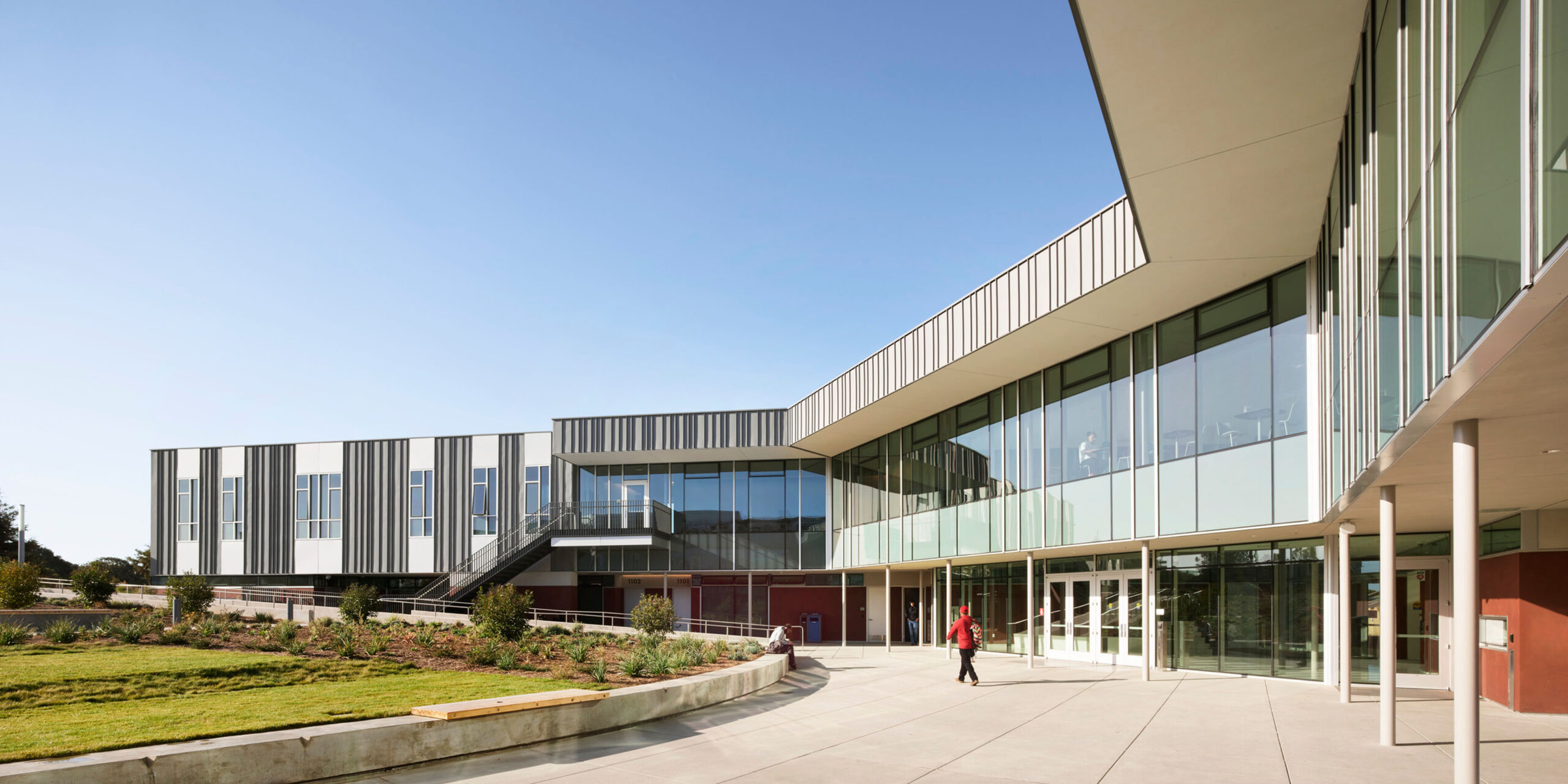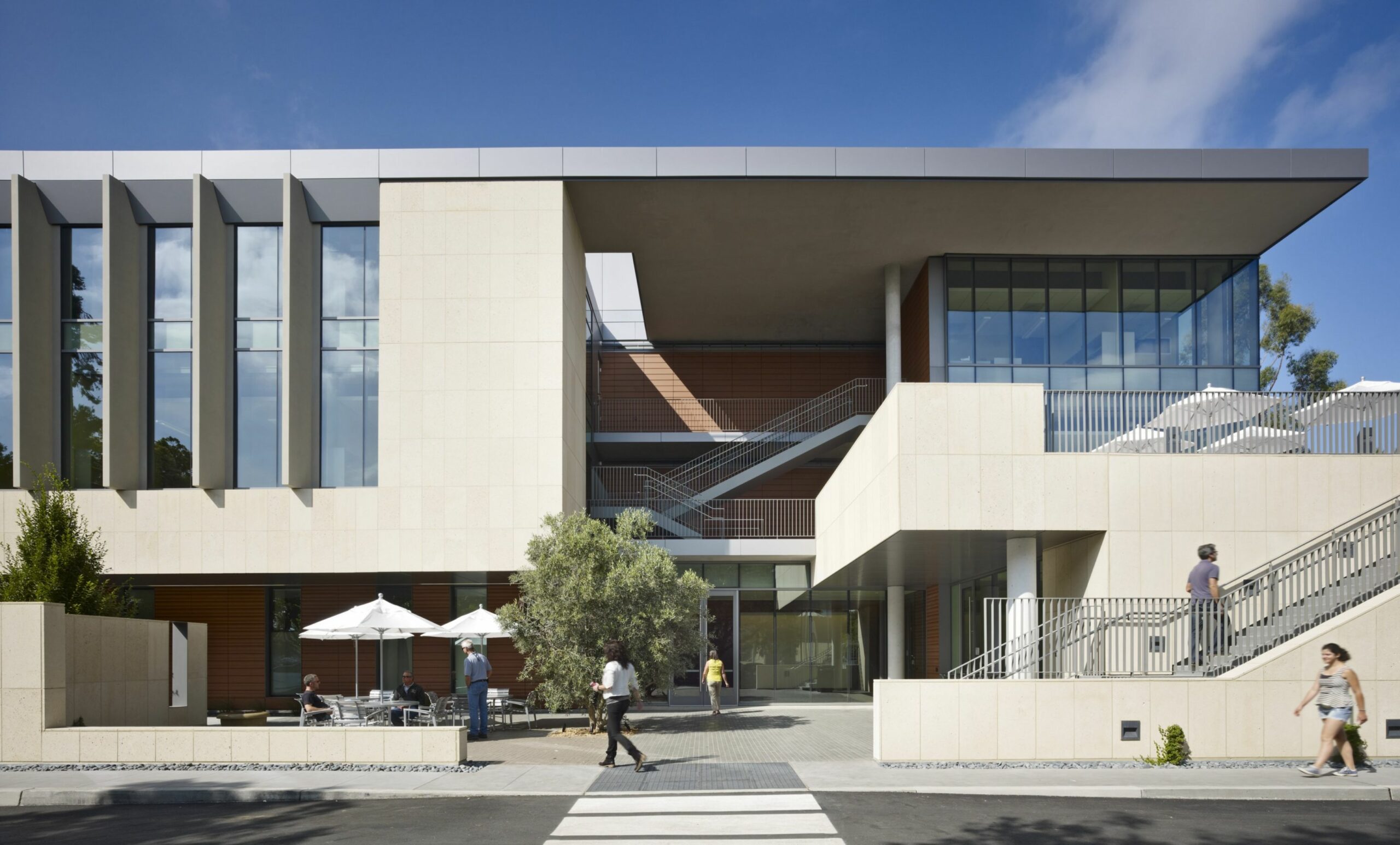Watsonville Water Resources Center Educating the community by putting water on display
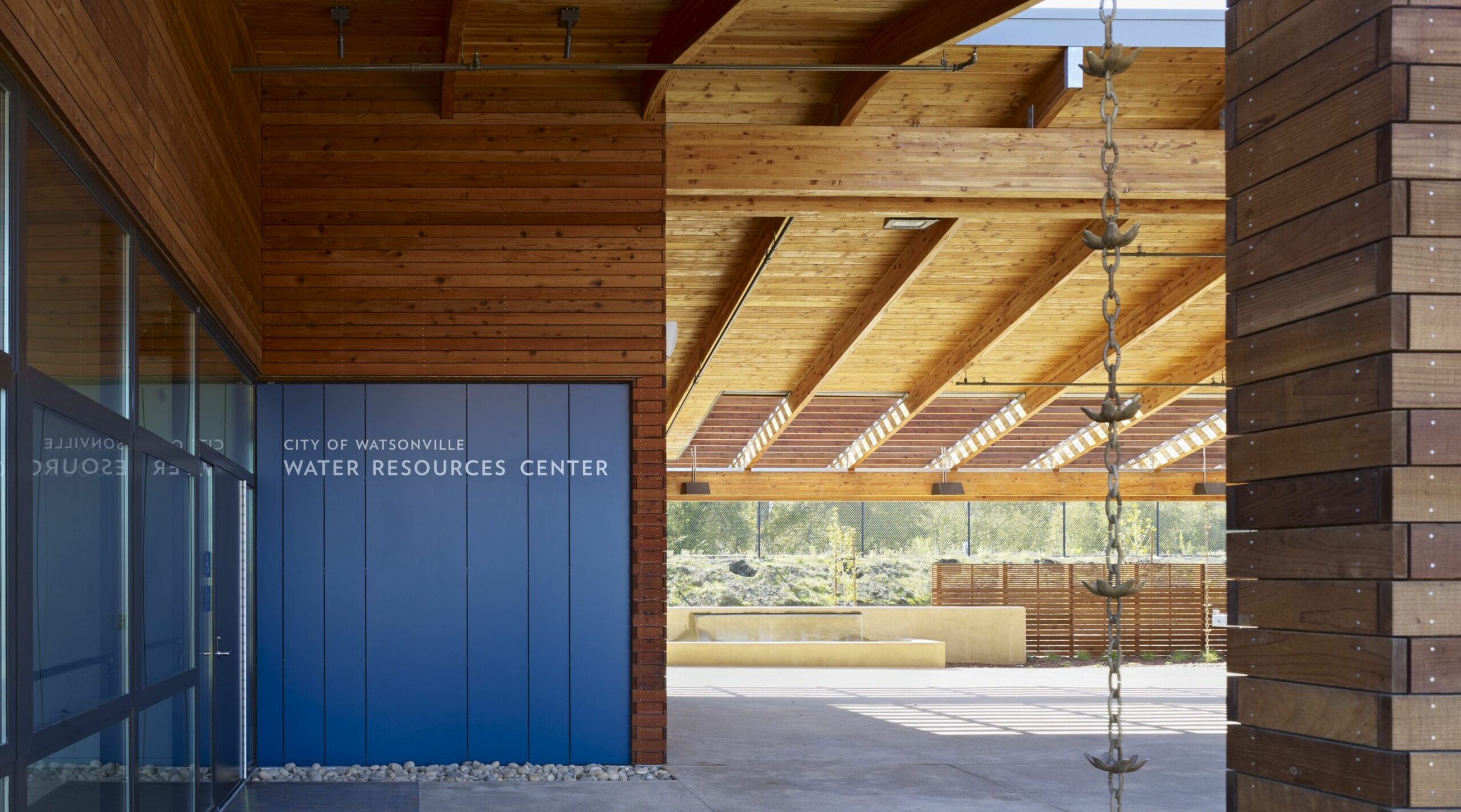
- Client City of Watsonville
- Location Watsonville, CA
- Size 16,000 sq ft
- Completion 2009
- Program Administrative offices, water quality lab, educational space
- Sustainability LEED Platinum
- Delivery CM-at-Risk
- Photographer Bruce Damonte
-
Awards
AIA Committee on the Environment (COTE) Top Ten Green Projects Award (2010)
AIA San Francisco Energy + Sustainability Honor Award (2010)
Savings by Design Award (2010)
California Green Building Wood Design Award (2010) -
AIA California Council Merit Award (2011)
Building Design + Construction Building Team Gold Award (2011)
ASHRAE Technology Award (2011)
New Buildings Institute California ZNE Watchlist (2015)
The Watsonville Water Resources Center, a joint effort between the City of Watsonville and the Pajaro Valley Water Management Agency, provides recycled water to farmers in South Santa Cruz and North Monterey counties. By treating wastewater for agricultural use, the project conserves overdrawn groundwater and prevents saltwater intrusion in coastal wells, while reducing wastewater discharges into the Monterey Bay National Marine Sanctuary. It is one of the nation’s first net zero energy civic projects. The Watsonville Water Resources Center is a functional, educational, and visual extension of the water recycling plant it supports. The center houses administrative offices, a water quality laboratory, and educational spaces, bringing together three city and county water departments, fostering ongoing collaboration on water management, conservation, and quality.
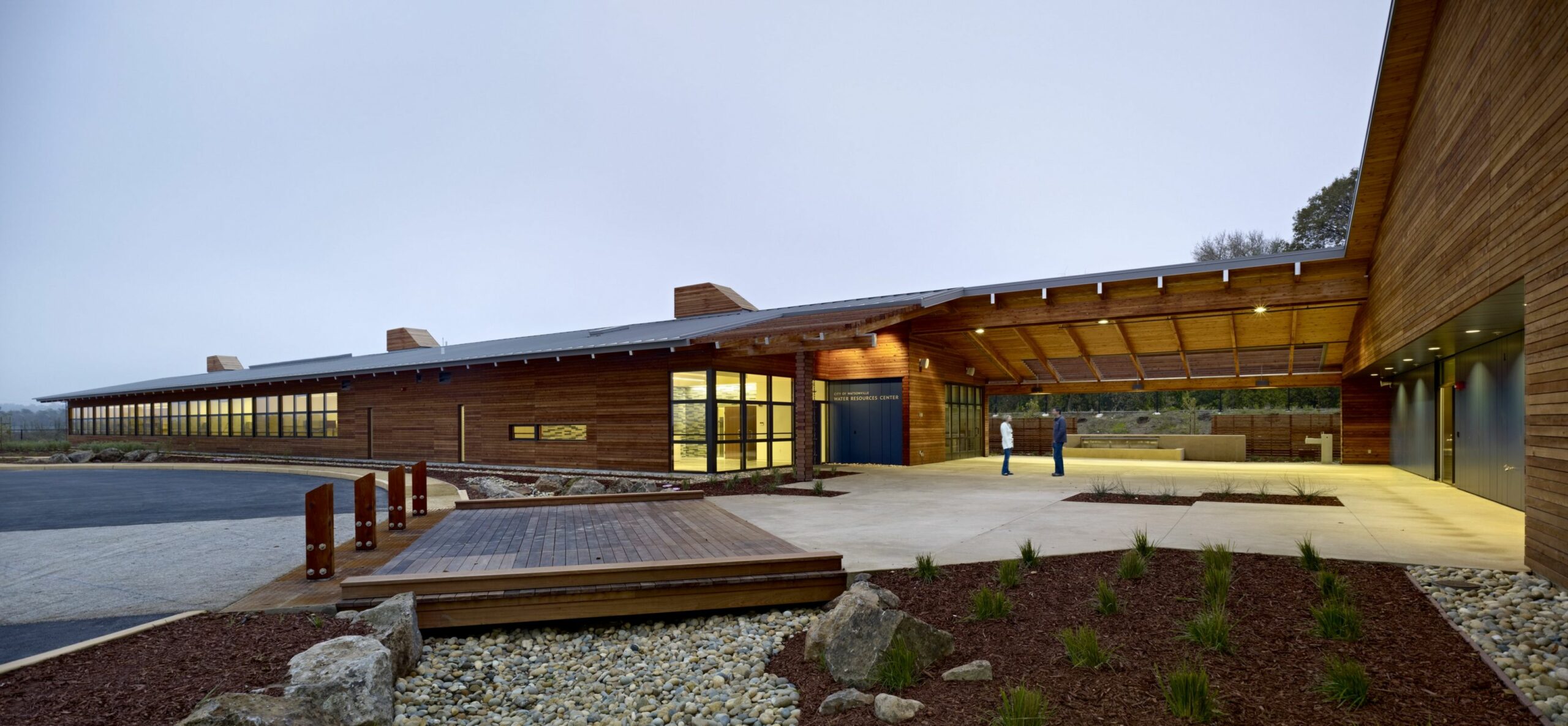
Putting California’s water story on display
Every design element tells the story of water in California. The building, its systems, materials, and landscape act as an interpretive center, educating visitors, including local school children, on water management and conservation through exhibits and guided tours. Visual displays further highlight the building’s water use strategies.
To emphasize water as a finite and seasonal resource linked to local agriculture, a courtyard water feature operates only when recycled water is available. Exposed radiant tube manifolds highlight the connection between water management and energy efficiency. Instead of hidden gutters, rainwater flows visibly down rain chains into swales, then to retention basins where it’s detained, treated, and infiltrated into the groundwater.
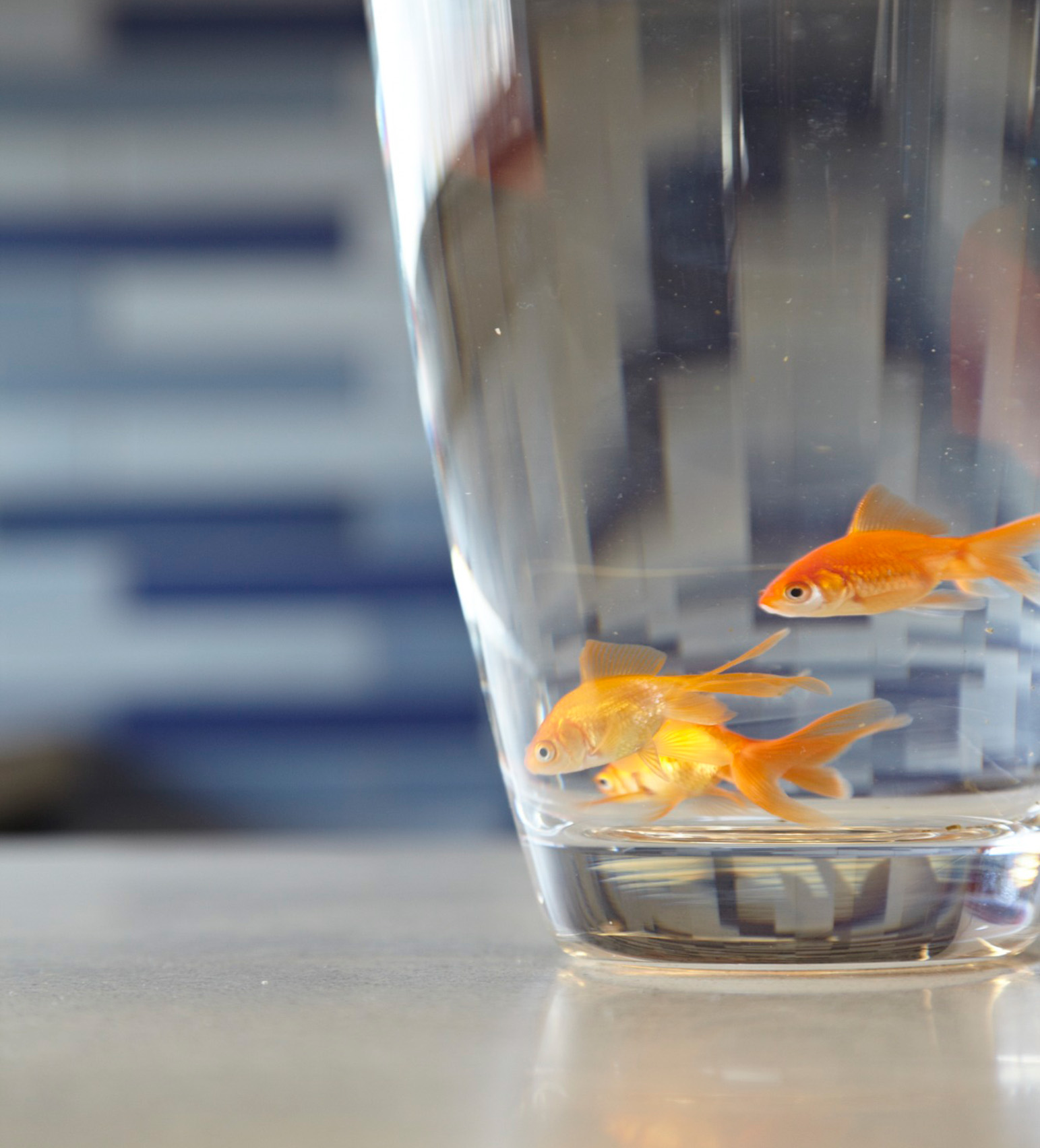
The goal for the site, once used for agricultural row crops, was to restore it to its pre-agricultural state. Native and drought-tolerant plants, using less than 70% of typical water, are irrigated only with recycled water. Bioswales and infiltration swales are visibly integrated into the landscape, supporting the project’s educational focus on sustainable water practices.
These water conservation strategies helped reduce potable water use by 50%, helped achieve energy efficiency targets that exceed ASHRAE 90.1 by 76%, and reduced reliance on energy-intensive water transport, significantly lowering the building’s overall carbon footprint.
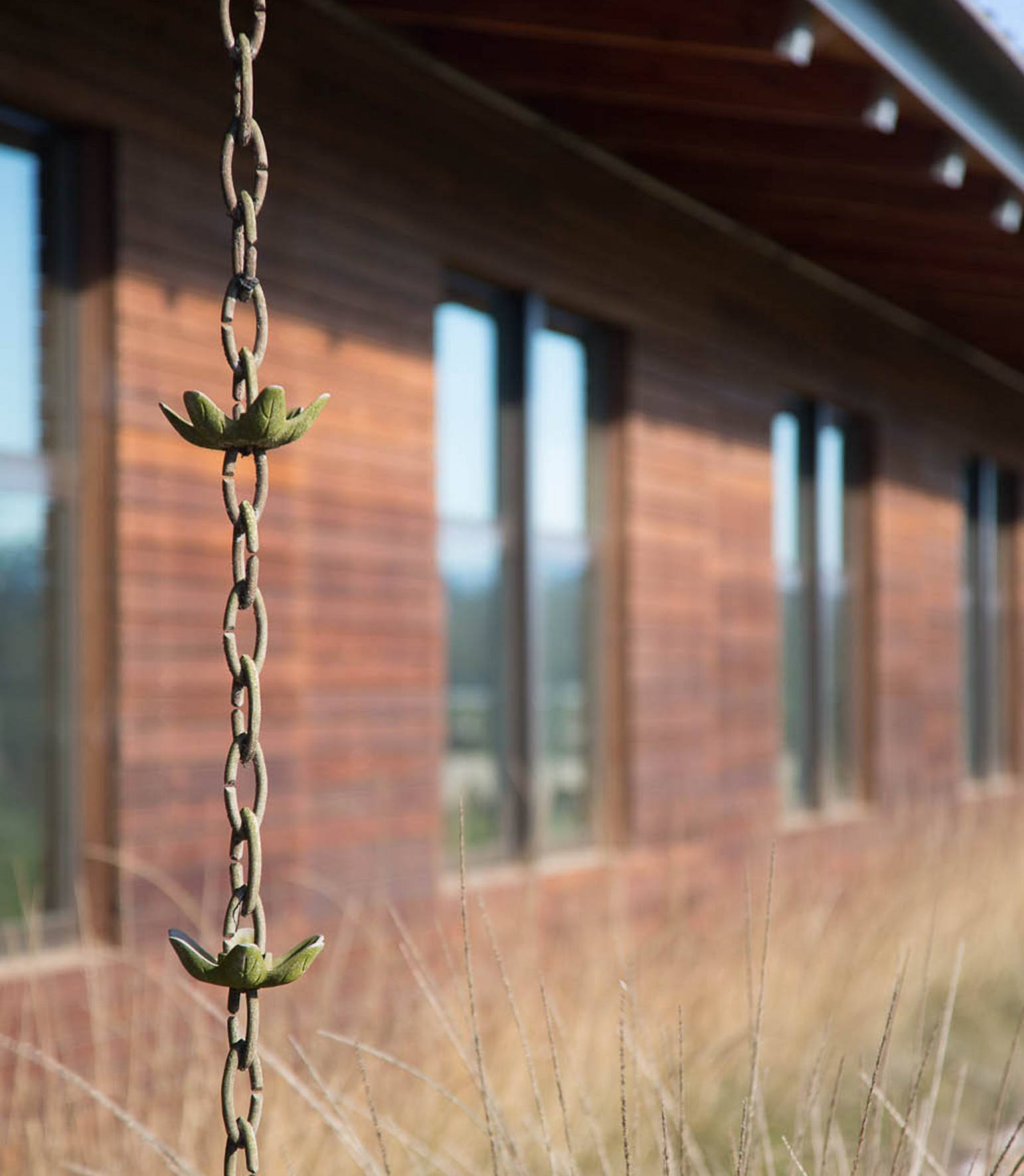
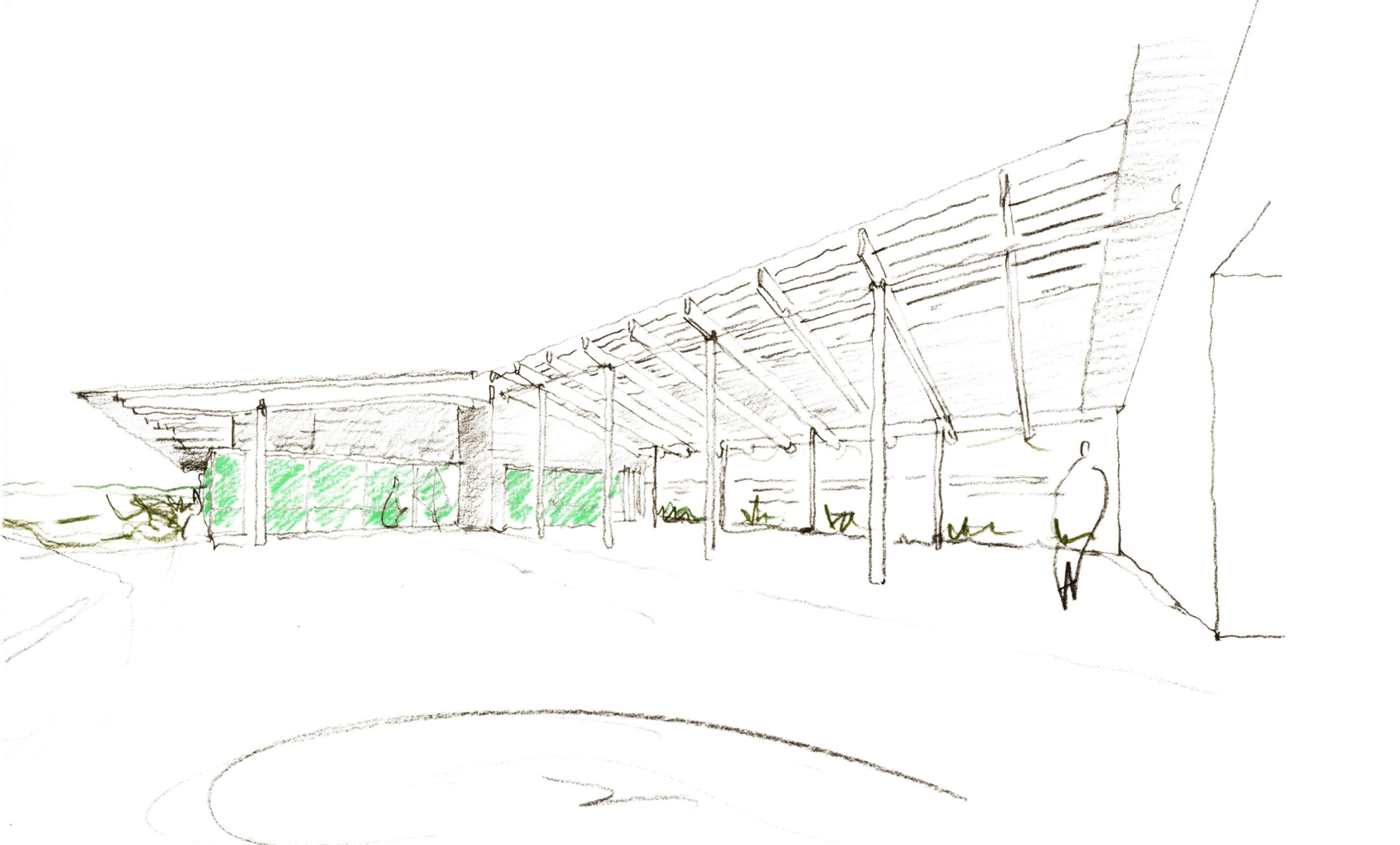
Comfort, energy, and carbon
The building’s 290-foot-long wing, with its narrow 43-foot width and south-facing façade, captures natural ventilation from marine breezes, optimizes solar gain in winter, minimizes heat in summer, and ensures daylighting throughout. Tall windows and skylights bring light deep into the interior, enhancing energy efficiency and creating an architecturally engaging space where natural light defines the design’s character and comfort year-round.
The ventilation and heating/cooling systems were decoupled, making the system far less energy-intensive than standard forced air. High-efficiency mechanical equipment, occupancy sensors, natural ventilation, CO2 sensors, chimneys, and roof-mounted solar panels all reduce energy use and carbon emissions while boosting performance and comfort. Natural ventilation, daylighting, and a highly efficient building envelope also enhance passive survivability.
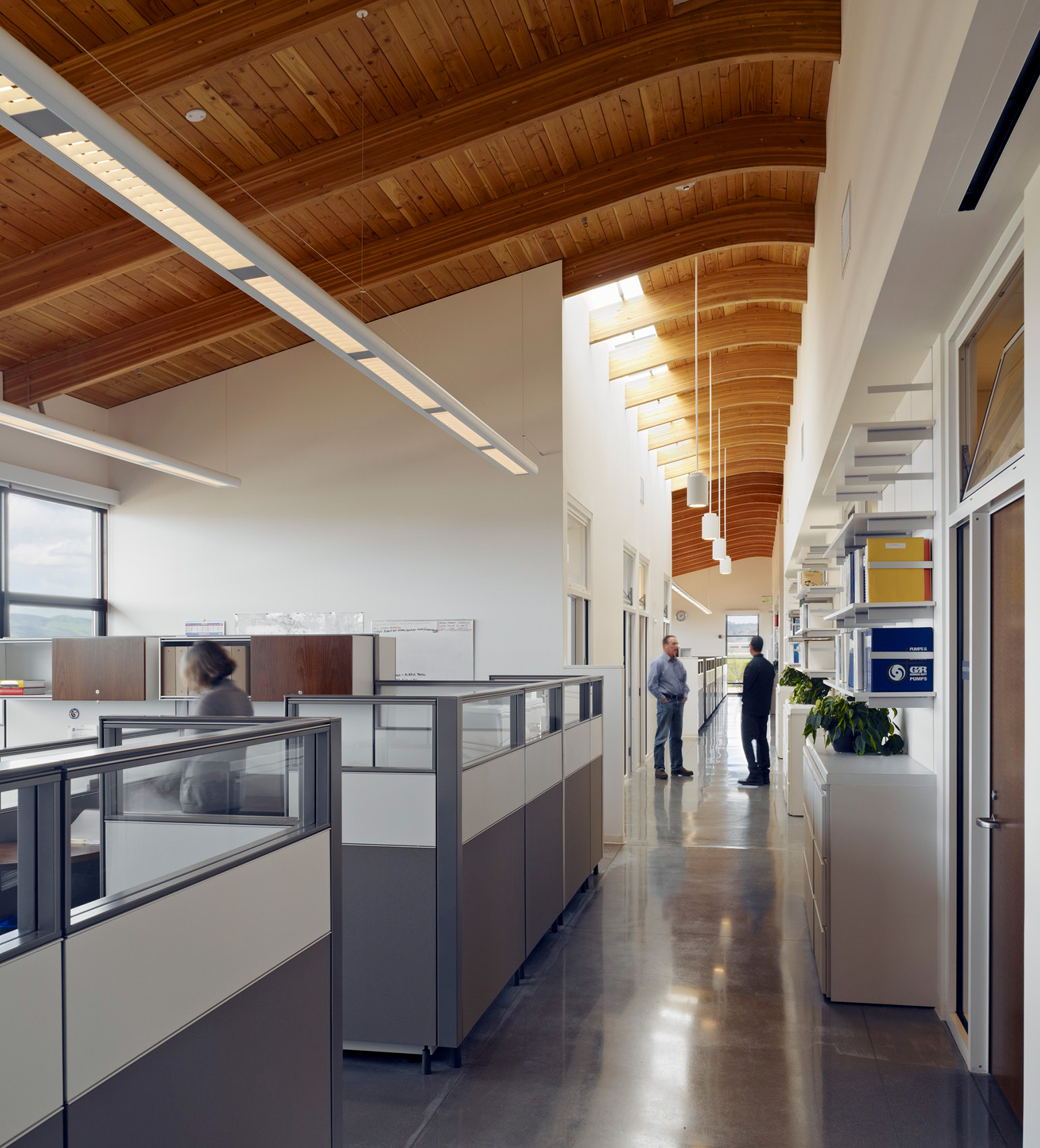
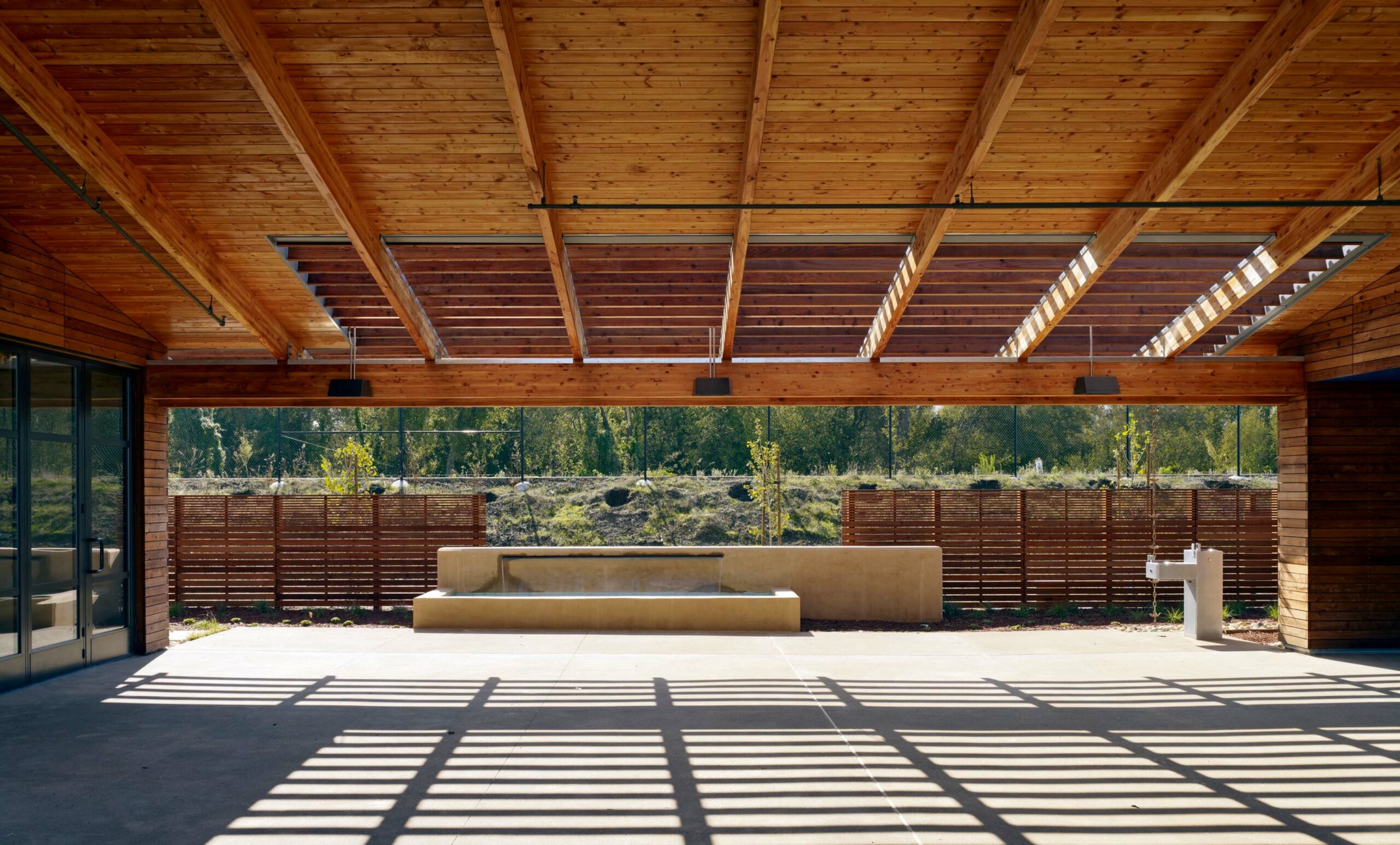
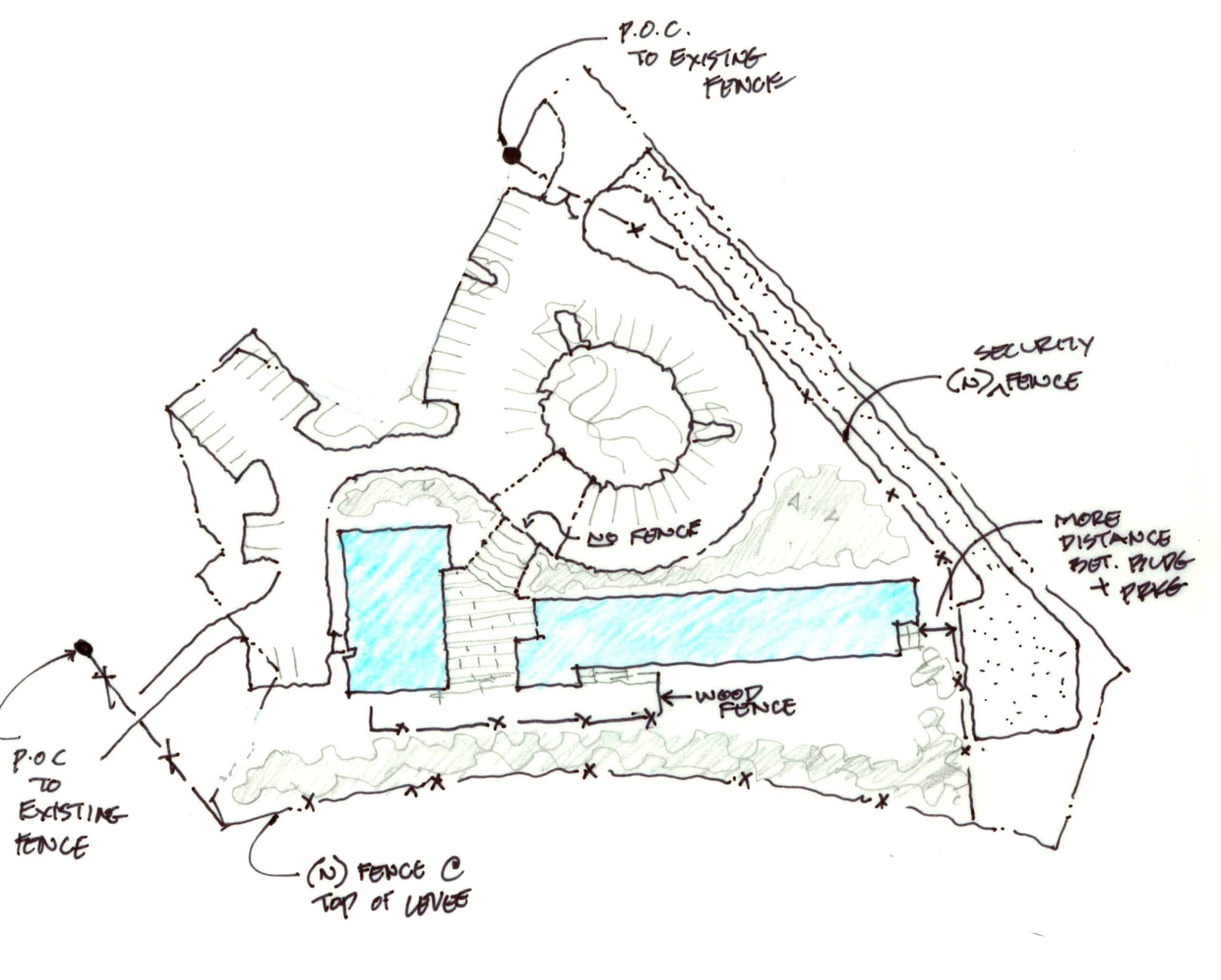
Modern, sustainable regionalism
The facility’s design, with its simple geometries and ties to local architectural vernacular, reflects conservation, restraint, and localism. Redwood, sourced from City-owned trees cleared for fire hazards, was custom milled just eight miles from the site for the building’s rain screen cladding, chosen for its durability in coastal conditions. The project also used reclaimed wood from county forests and reduced the space of wood framing to minimize embodied carbon. The rain-screen wall allows the wood to breathe, reducing water penetration and improving indoor air quality.
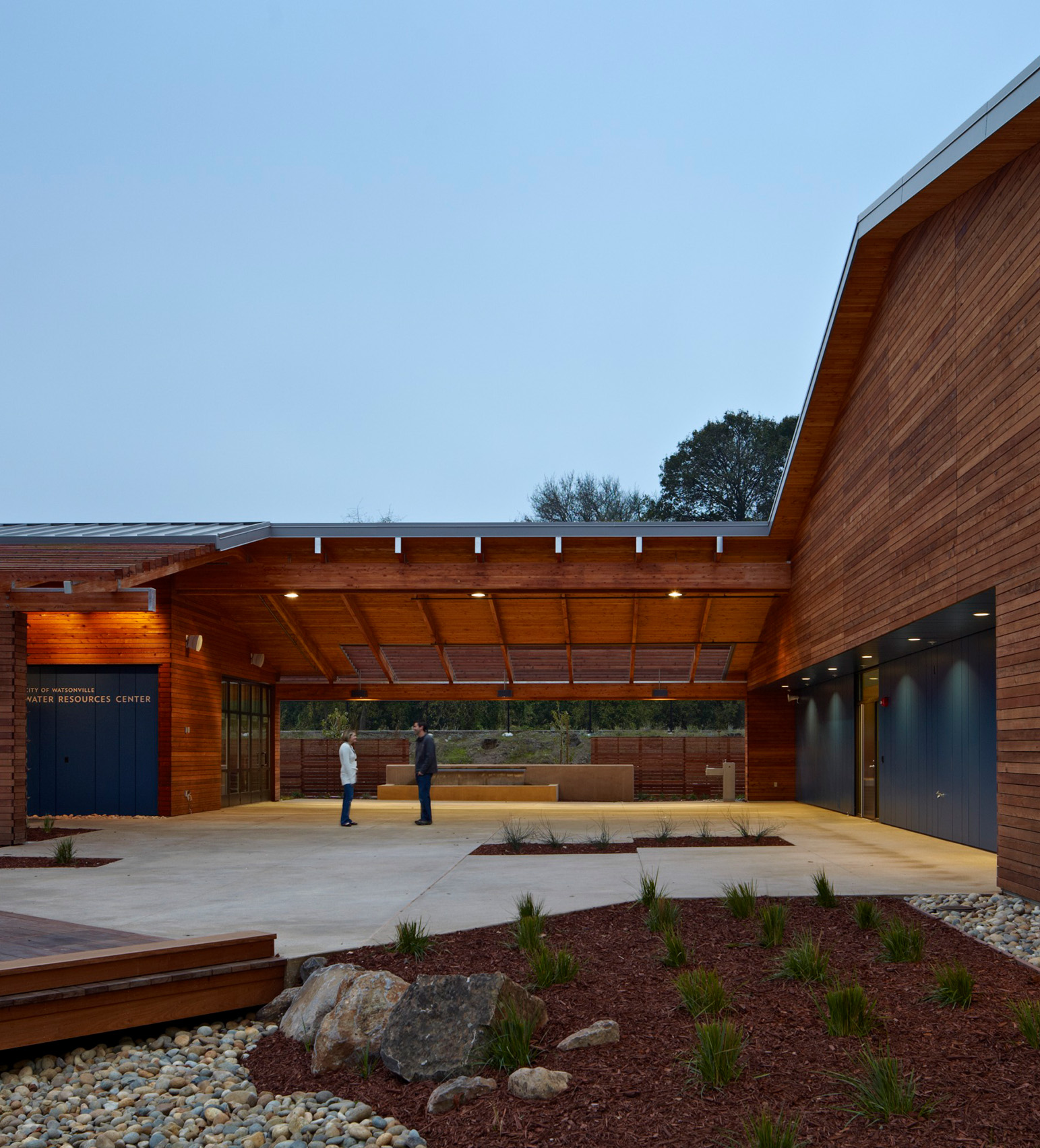
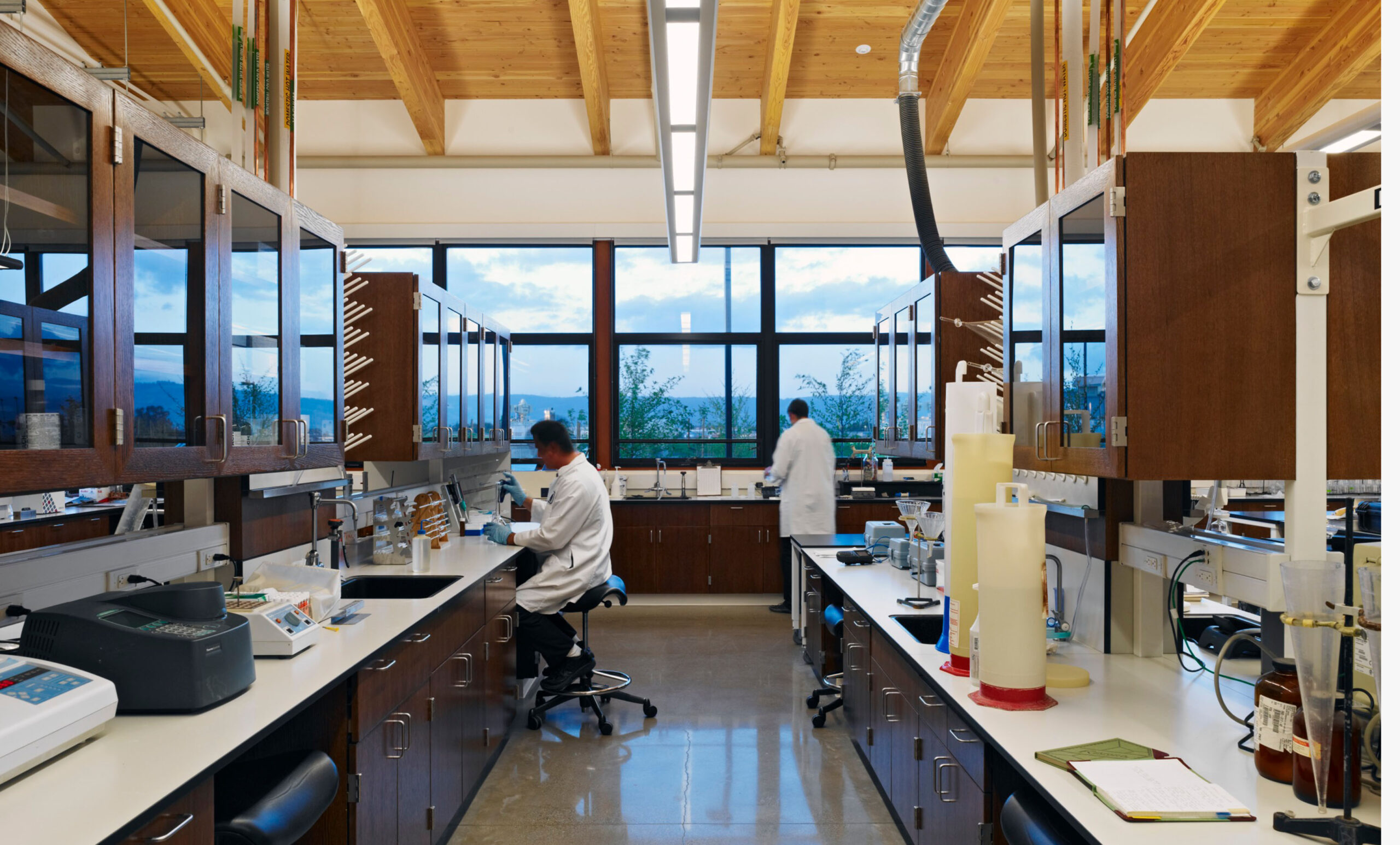
Water as a finite, valuable resource
The Watsonville Water Resources Center tells the story of California’s most vital resource: water. Through its design, the Center is a living exhibit, laying bare the intricate ties between water, agriculture, and land. The building serves local communities by grounding its purpose in the realities of both environmental survival and economic necessity.
